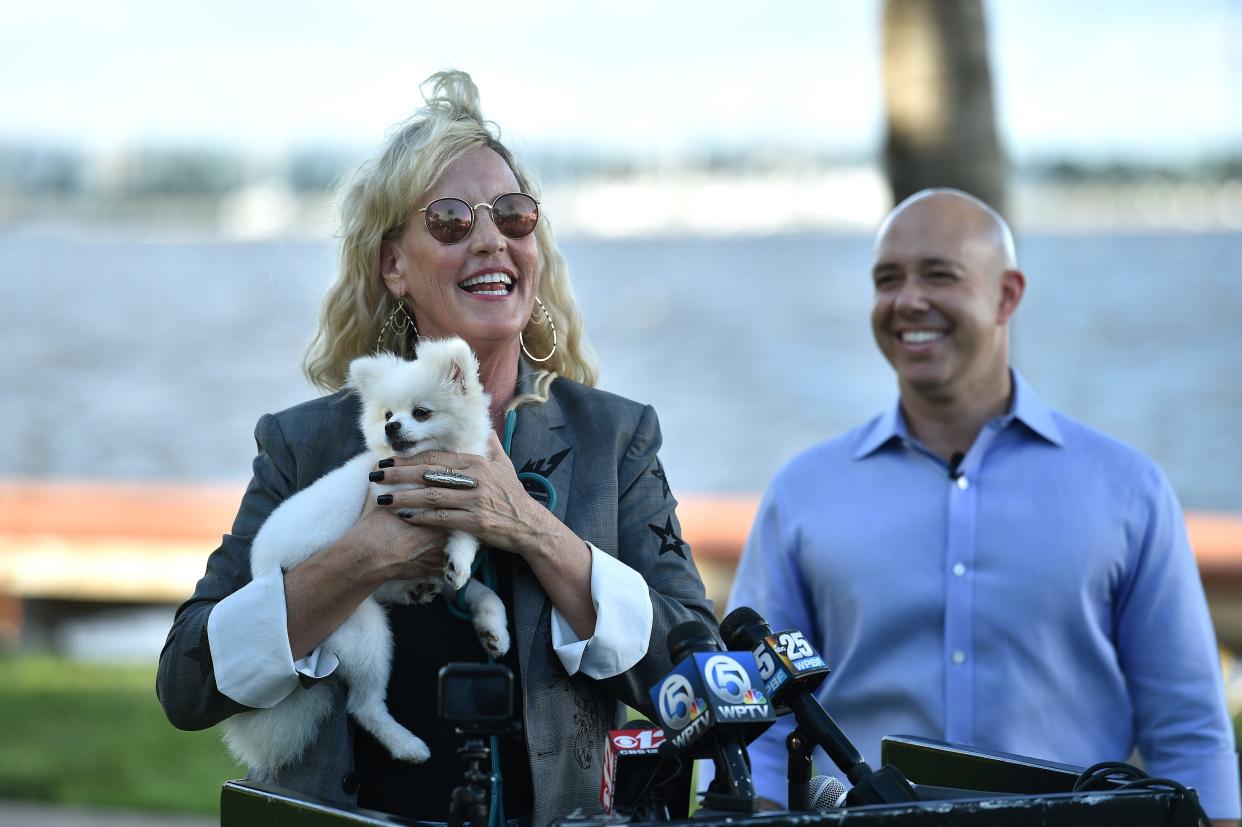Army Corps will continue Lake O releases despite algae found in St. Lucie River
Lake Okeechobee discharges have not sparked toxic algae blooms in the St. Lucie River yet, but Treasure Coast scientists, residents and business owners are worried about the impending possibility.
The Florida Department of Environmental Protection found "mixed algae" but no toxins in water samples it took from the river Feb. 29. DEP said it did not identify the specific species and didn't specify whether it include a type of blue-green algae that can be toxic.
However, conditions are right for a "major algae bloom" and the risk of it being toxic will increase as the water temperature increases into summer, said Mark Perry, a scientist and executive director of the nonprofit Florida Oceanographic Society in Stuart.
"We are concerned," he said. "The nutrients are there. The freshwater conditions are there. These are all the right ingredients."
The Army Corps of Engineers does not necessarily stop or suspend Lake O discharges at the first sign of algae, according to agency spokesperson J.P. Rebello. While DEP confirmed the presence of microcystis, which is a cyanobacteria people commonly call "algae," it has not said whether it's Microcystis aeruginosa, which people commonly call "blue-green algae." The latter may or may not contain a toxin called microcystin.
"We would likely not stop releases based solely on the presence of Microcystis aeruginosa, but would consider that when making Lake Okeechobee release decisions," he said. "If DEP testing revealed the presence of toxins, the concentration of those toxins would be highly considered when making Lake Okeechobee release decisions."
In February 2023, the agency suspended discharges six days after the Florida Department of Health issued a health alert because a water sample had tested positive for toxic algae.
Stuart residents worried about toxic algae
The guacamole green speckles showed up in the river after Lake O discharges began — “100%,” said Apex Marine Manager Mary Pullen Radabaugh. Over the years, she has seen toxic algae blooms foul Central Marine on the other side of the river, where she used to work.
Rio resident Ashley Guzi, who reported the algae she saw to DEP, is especially worried. Her golden retriever was one of six dogs sickened by toxic algae in 2018, including a 9-year-old standard poodle that died, according to Christina Maldonado of Monterey Animal Clinic in Stuart.
Costa nearly died of liver failure after drinking river water, Maldonando said. The then-4-year-old dog's coat blanched to gray and she slowed to an elder's pace, Guzi said.
"It's traumatic to go through that with an animal and not know if she's going to make it," said Guzi, who also has two other dogs. "The dogs will not be allowed in the backyard."

Lake Okeechobee discharges
Scientists are also concerned about oysters and seagrasses and the possibility of a red tide outbreak on Florida's west coast. Lake O discharges' high volume of freshwater and sediment can kill oysters and seagrasses in the brackish St. Lucie River, Perry said.
Salinity dipped below 5 parts per thousand at Speedy Point in Stuart between Feb. 19 and Feb. 22, according to the U.S. Geological Survey. That level can kill oysters and seagrasses after 10 sustained days, Perry said.
The Army Corps discharged about 15 billion gallons of Lake O water into the St. Lucie River from Feb. 17 to Feb. 26, then stopped releases for four days.
The agency resumed and increased discharges March 2, and expects to release nearly 17 billion gallons by March 12.
The agency has not released the daily schedule beyond that, but has said it will "evaluate the situation" by April 1.
The Caloosahatchee River is bearing the brunt of discharges with 2.6 billion gallons per day. The Lake Worth Lagoon is getting about 323 million gallons per day.
The agency wants to lower the lake level about 2 feet before the June 1 start of the hurricane season — from 16 feet, 4 inches to about 14 feet, 6 inches — to make room for heavy rains. Despite having discharges for three weeks, the lake level was at 16 feet 1 inch Tuesday or had been lowered 3 inches since Feb. 17.
Harmful algae blooms (HAB)
The health department advises people to take these precautions during discharges:
Do not drink, swim, wade, use personal watercraft, water ski or boat in waters where there is a visible blue-green algae bloom.
Wash your skin and clothing with soap and water if you have contact with algae or water that's discolored or smelly.
Keep pets away from the area. Water containing algae blooms are not safe for animals. Pets and livestock should have a different source of water when algae blooms are present.
Do not cook or clean dishes with water contaminated by algae blooms. Boiling the water will not eliminate the toxins.
Eating fillets from healthy fish caught in freshwater lakes experiencing blooms is safe. Rinse fish fillets with tap or bottled water, throw out the guts and cook fish well.
Do not eat shellfish in waters with algae blooms.
Katie Delk is TCPalm's environment reporter. Contact her at katie.delk@tcpalm.com or 772-408-5301. Check for updates @katie_delk.
This article originally appeared on Treasure Coast Newspapers: Army Corps will continue Lake Okeechobee releases despite algae
